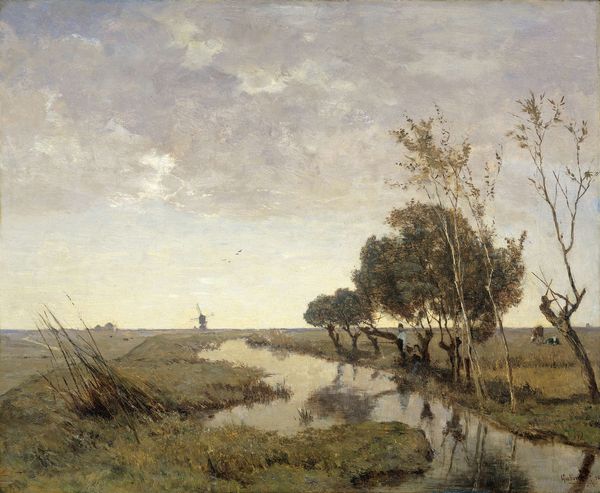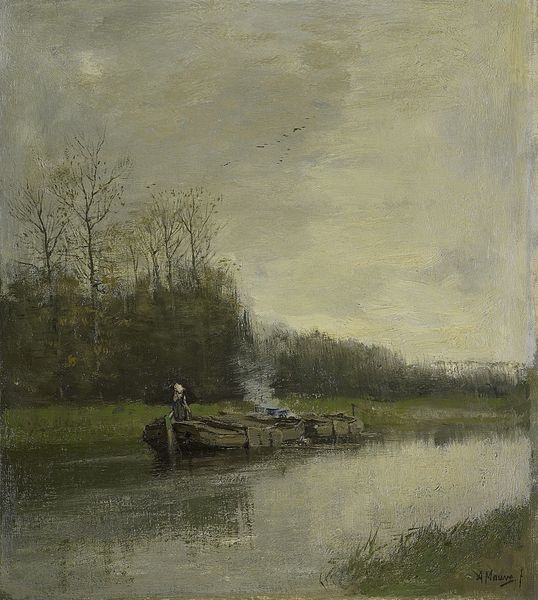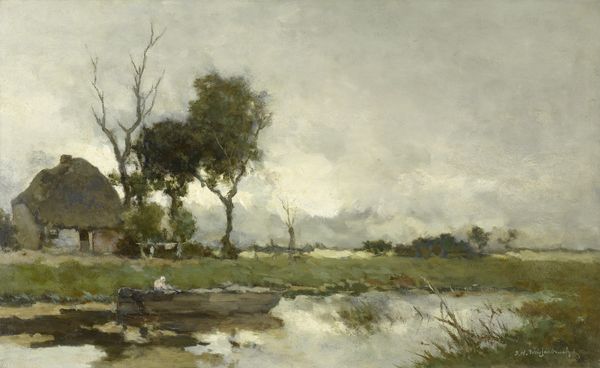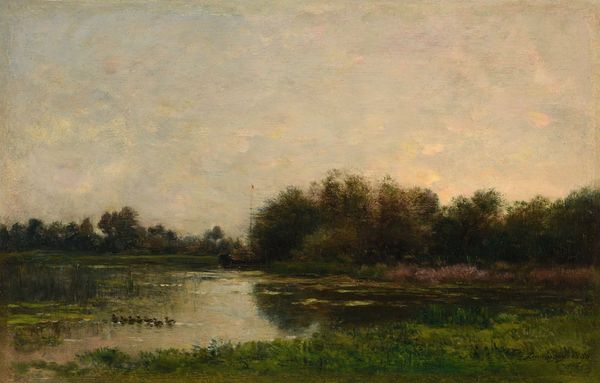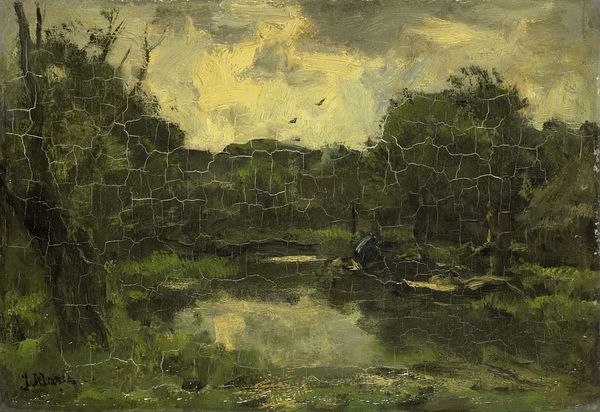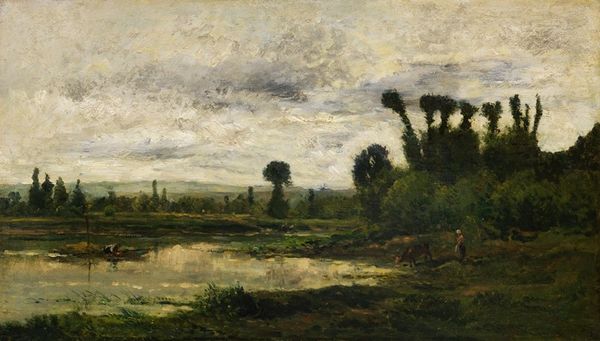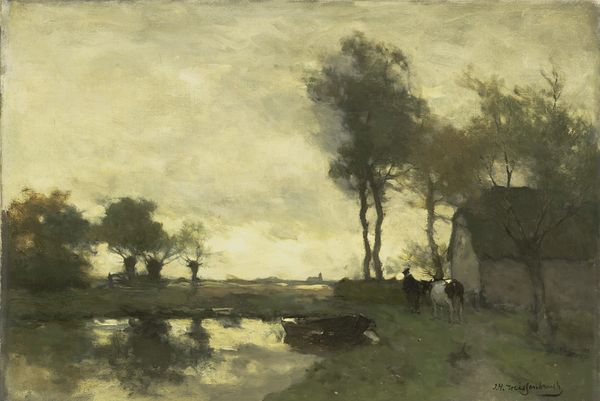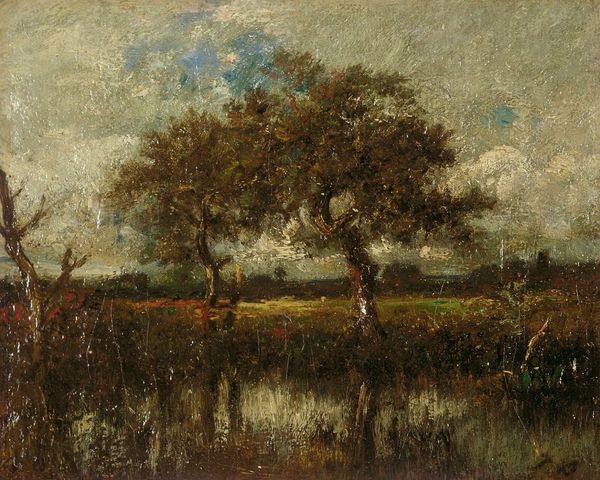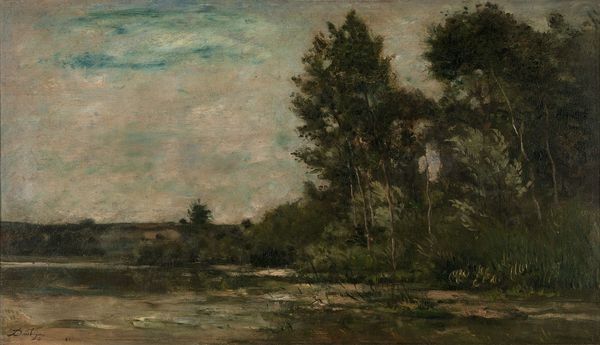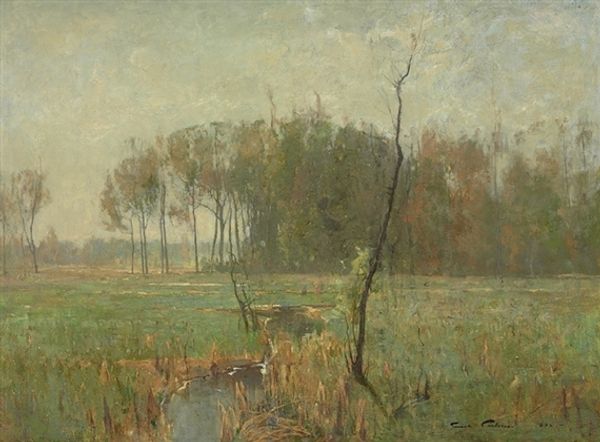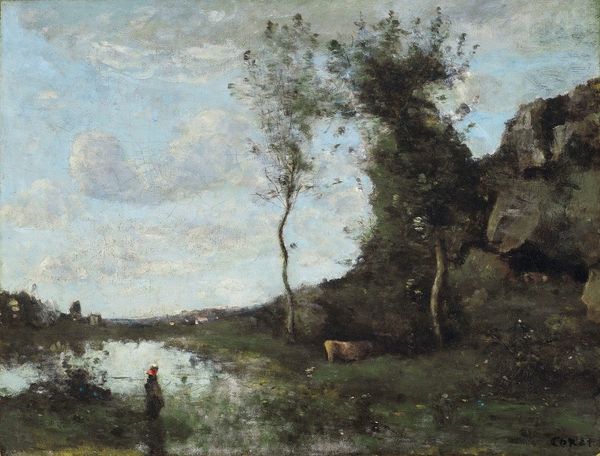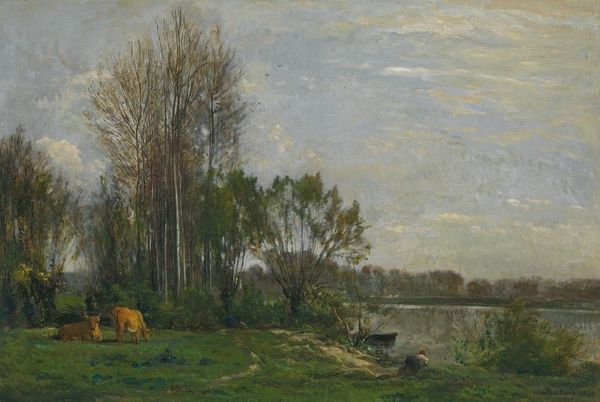
Dimensions: height 59 cm, width 44 cm, depth 9.5 cm, height 79.5 cm, width 64 cm
Copyright: Rijks Museum: Open Domain
Curator: Paul Joseph Constantin Gabriël crafted this canvas, titled "Ducks' Nests," sometime between 1890 and 1900. It now resides here at the Rijksmuseum. Editor: My immediate response is one of quiet contemplation. The subdued palette, the blurry lines... it creates a rather melancholy atmosphere, despite ostensibly depicting nests in nature. Curator: Yes, and the composition directs our eye purposefully. Note the stark horizontality created by the water, counterbalanced by the vertical thrust of the reeds. This evokes a sense of spatial equilibrium. Moreover, the use of oil paint, thickly applied in places, is incredibly important. Gabriël harnesses it to render the tactile quality of the nests themselves. Editor: While I appreciate your deconstruction of the form, I'm more concerned with what it represents in terms of human intervention within natural habitats. The presence of these crafted nests points to an agenda, the subtle hand of humans impacting this environment. It evokes feelings of unease and control. Were these ducks actually able to thrive freely or were they managed for specific, possibly exploitative, purposes? Curator: It's plausible that this image can function as a silent commentary. The loose brushwork obscures any truly discernible detail, inviting viewers to read their anxieties into the landscape. Gabriël's brush strokes exemplify the Romantic style. He evokes emotion through a sublime landscape. Editor: This sublime landscape feels… fraught. These obscured details invite interrogation: the relationship between industrialization and nature, between observation and interference, even the very human act of defining “natural.” Do these Ducks' Nests reflect nature in its pure form, or do they point to a society that is always changing nature's course, consciously or not? Curator: Perhaps that very tension, that ambiguity is central to the work. The painting's true meaning is never settled; it continues to shift. Editor: Acknowledging that ambivalence allows us to acknowledge the nuances of our ever changing relationships with the natural world.
Comments
rijksmuseum about 2 years ago
⋮
These baskets made of willow branches and resting on sticks were intended to offer shelter to nesting ducks. In the past, their eggs were gathered for consumption. In contrast to his mills and panoramic views, Gabriël here ‘zooms in’ on a detail in nature. He thus presents an unusual perspective of the watery Dutch landscape from a low vantage point on the embankment.
Join the conversation
Join millions of artists and users on Artera today and experience the ultimate creative platform.
